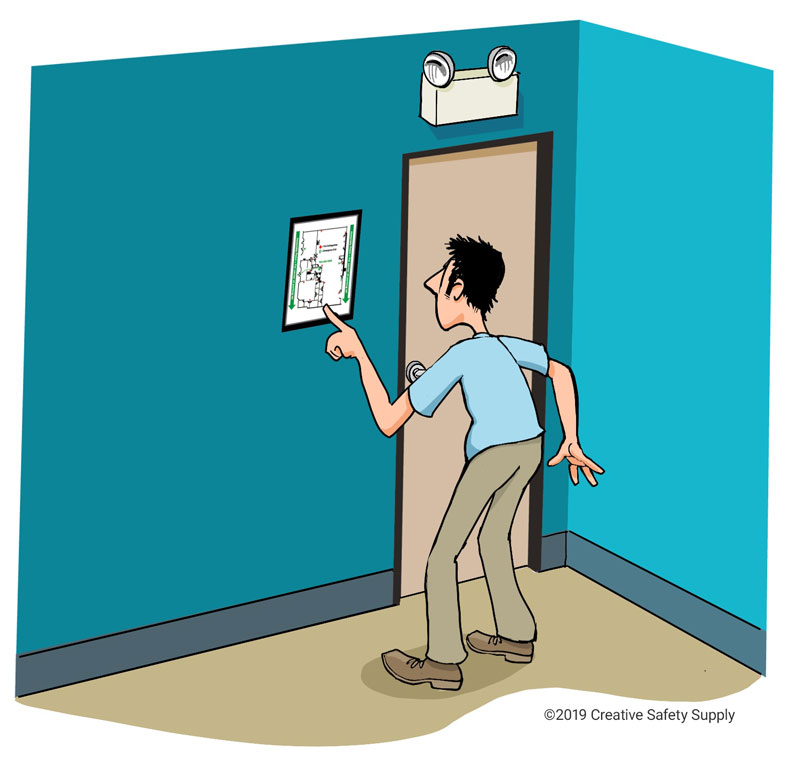
Every facility is required by law to have an OSHA-compliant emergency exit plan. Emergency exits are an element of emergency exit routes which OSHA defines as “a continuous and unobstructed path of exit travel from any point within a workplace to a place of safety.”
 The three components of an exit route are as follows:
The three components of an exit route are as follows:
- Exit Access: Portion of the route leading to the exit.
- Exit: Typically separated from the access portion and the discharge portion of the route, the actual exit part is a protected way of travel to the exit discharge.
- Exit Discharge: This is the last part of the route, leading either directly outside or to an open space with outside access.
Compliant design and construction specifications for exit routes are outlined in OSHA standard 1910.36. Requirements include:
- Exit routes must be a permanent part of the workplace
- Exit routes must use fire resistant materials to separate the exit from the rest of the workplace.
- Emergency exits should only have openings that are necessary to exit the workplace or exit the discharge portion of the route. Openings must have a self-closing fire door.
- At least two facility exit routes, unless the size and occupancy of the building allows all employees to evacuate safely using only a single exit route. Exits should be located far enough away from each other in the case of a blocked door
- Exit doors must remain unlocked from the inside at all time and only side-hinged doors are permitted.
- Exit routes must be large enough to support the maximum permitted occupant load.
- An exit route must be at least seven feet and six inches tall and at least 28 winches wide.
Emergency exits and exit routes must be kept clear at all times and employees should not have to walk in hazardous areas to reach the exit. Each exit should be clearly marked with a safety sign to prevent confusion in the chaos of an emergency; use signs and floor markings along the access path to guide people to safety. Utilizing photoluminescent tape and arrows will keep the route easy-to-see even in a lights-out emergency.
Similar Glossary Terms
- Emergency Action Plan (EAP)
- Muster Point
- Confined Space
- ASHRAE 90.1
- NFPA 170
- Anchor Point
- HAZWOPER
- Authority Having Jurisdiction (AHJ)
- Asbestos Exposure

